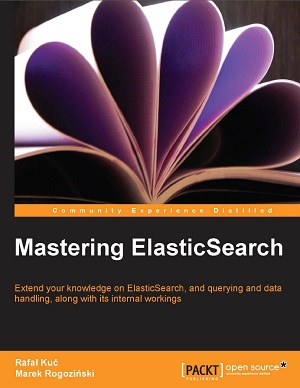
出版时间:2013.10
官网链接:Packt
下载地址:百度网盘 腾讯网盘 360网盘(提取码:060c)
内容简介:
ElasticSearch is fast, distributed, scalable, and written in the Java search engine that leverages Apache Lucene capabilities providing a new level of control over how you index and search even the largest set of data.
“Mastering ElasticSearch” covers the intermediate and advanced functionalities of ElasticSearch and will let you understand not only how ElasticSearch works, but will also guide you through its internals such as caches, Apache Lucene library, monitoring capabilities, and the Java API. In addition to that you’ll see the practical usage of ElasticSearch configuration parameters, monitoring API, and easy-to-use and extend examples on how to extend ElasticSearch by writing your own plugins.
“Mastering ElasticSearch” starts by showing you how Apache Lucene works and what the ElasticSearch architecture looks like. It covers advanced querying capabilities, index configuration control, index distribution, ElasticSearch administration and troubleshooting. Finally you’ll see how to improve the user’s search experience, use the provided Java API and develop your own custom plugins.
It will help you learn how Apache Lucene works both in terms of querying and indexing. You’ll also learn how to use different scoring models, rescoring documents using other queries, alter how the index is written by using custom postings and what segments merging is, and how to configure it to your needs. You’ll optimize your queries by modifying them to use filters and you’ll see why it is important. The book describes in details how to use the shard allocation mechanism present in ElasticSearch such as forced awareness.
“Mastering ElasticSearch” will open your eyes to the practical use of the statistics and information API available for the index, node and cluster level, so you are not surprised about what your ElasticSearch does while you are not looking. You’ll also see how to troubleshoot by understanding how the Java garbage collector works, how to control I/O throttling, and see what threads are being executed at the any given moment. If user spelling mistakes are making you lose sleep at night – don’t worry anymore the book will show you how to configure and use the ElasticSearch spell checker and improve the query relevance of your queries. Last, but not least you’ll see how to use the ElasticSearch Java API to use the ElasticSearch cluster from your JVM based application and you’ll extend ElasticSearch by writing your own custom plugins.
If you are looking for a book that will allow you to easily extend your basic knowledge about ElasticSearch or you want to go deeper into the world of full text search using ElasticSearch then this book is for you.
What you will learn from this book:
- Understand how Apache Lucene works
- Use and configure different scoring models to alter default scoring mechanism
- Exploit query rescore to recalculate the score of top N documents
- Choose the right amount of shards and replicas for your deployment
- Use shards allocation wisely and understand its internals
- Alter the index format by using different postings format
- Use your knowledge to create scalable, efficient, and fault tolerant clusters
- Monitor your cluster by using and understanding the ElasticSearch API
- Learn to control segments merging and why ElasticSearch uses merging at all
- Overcome problems with garbage collection, threading, and I/O
- Improve the user search experience by using ElasticSearch functionality
- Develop an application using the ElasticSearch Java API and develop custom ElasticSearch plugins